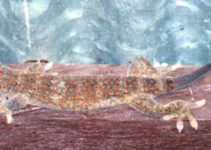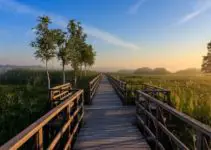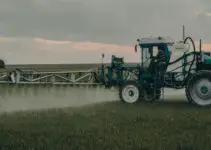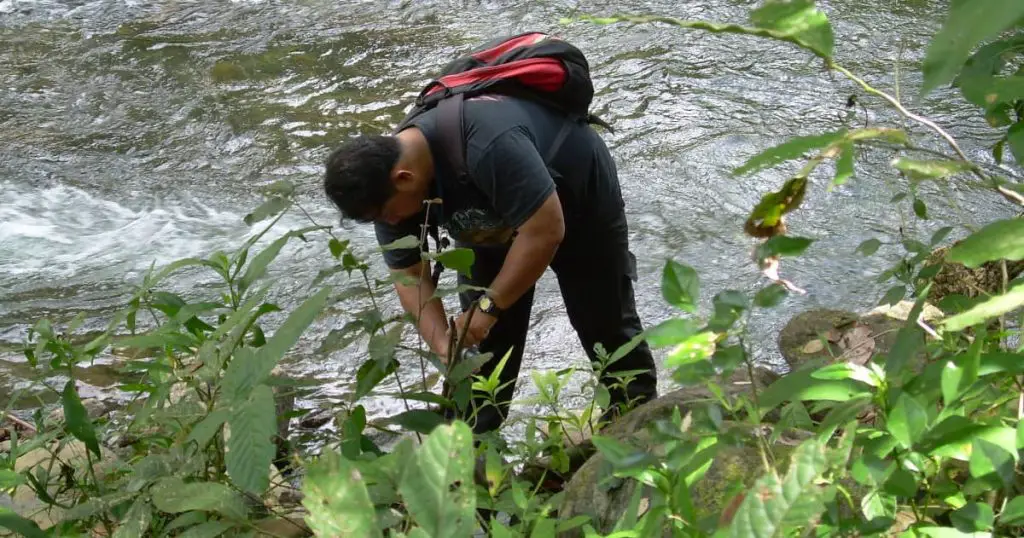
We conducted a quick photo inventory of the aquatic and riparian sections of the Balsahan River to get a glimpse of aquatic fauna found in a typical freshwater ecosystem. Read on to find out what organisms thrive in a running freshwater ecosystem.
Table of Contents
Scope of the Quick Inventory in the Freshwater Ecosystem
Master of Science in Environmental Management students of the Palawan State University conducted a three-hour inventory of the aquatic and riparian zone fauna of Balsahan River last January 23, 2010. They performed the inventory along a stretch of the Balsahan River, within a still water area about 500 meters upstream of the pool area frequented by visitors and tourists, from 9am to 12 noon.
The activity aimed to:
- document and identify life found in and along the fringes of the freshwater river, and
- identify the ecosystem services and goods in the area.
The documentation only used digital cameras at 4 megapixels (Nikon Coolpix L4), and 6 megapixels (Nikon D60). During the quick inventory, we didn’t collect any organisms but turned the rocks to reveal the organisms hiding in these places. We interviewed visitors and employees in the area informally and without structure to identify the ecological benefits from the river.
This report presents the fishes, insects (dominant), amphibians, gastropods, reptiles and crustaceans found in, along the shallow portions of the river, and along the riverbanks described as the riparian zone. It does not present an exhaustive inventory of life found within and next to the river.
Findings
Notable among those found observed and documented was the Palawan horned frog (Pelobatrachus ligayae) which is Near Threatened species by the International Union for the Conservation of Nature (IUCN).
The next section features photographs of organisms found in Balsahan River, including their identification to species level as visual inspection of online references will allow. I placed question marks or just common names on those items that present identification difficulty. Of course, pictures alone would not help that much in accurate identification, but it’s good to know these organisms exist in the area.
Aquatic Zone
Fishes
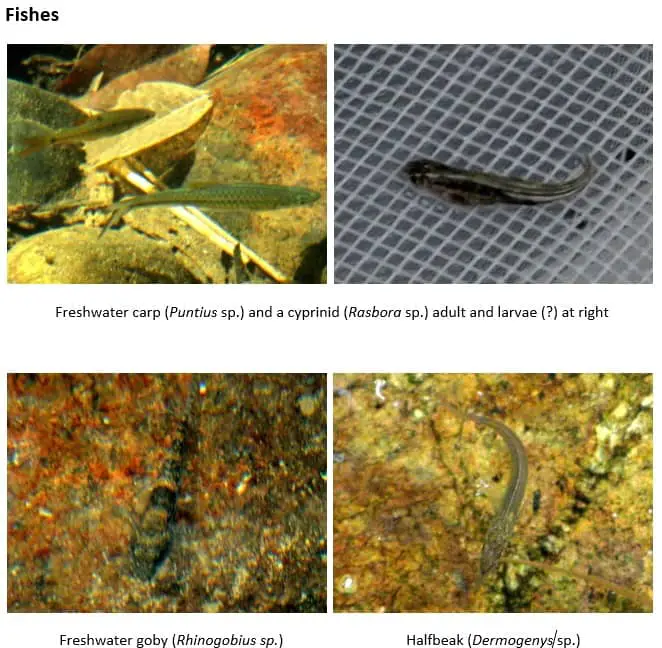
The team recorded four freshwater fishes in the Balsahan River: a carp, a cyprinid, a goby, and a halfbeak. We found the fishes floating above rocks and amongst fallen leaves that sank into the river, adding organic materials. The rocks serve as habitat and hiding places for these fishes to evade predators.
Aquatic Insects
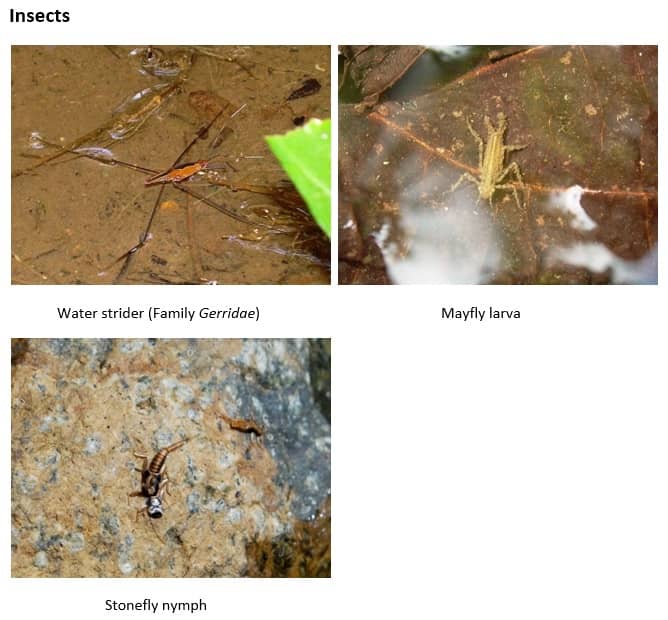
We found three aquatic insects in the Balsahan River consisting of a water strider which are fairly common, a mayfly larvae nestled on a submerged leaf, and a stonefly nymph.
The life cycle of a mayfly begins with eggs laid on water surfaces, which hatch into aquatic nymphs. These nymphs feed on various organic materials found in the river. They eventually metamorphose into pre-adult stage called duns before becoming fully formed adults or spinners to mate.
Stoneflies lay their eggs in fresh water, which develop into nymphs. These nymphs mature over a period ranging from three months to three years. After emerging from the water, they undergo one last instar—the developmental stage of an arthropod between moults—to become adults.
Both mayflies and stoneflies are crucial to their ecosystems. Their nymph stages are sensitive to pollution, making them good indicators of water quality. They also contribute to the energy transfer cycle in freshwaters. Their presence and health can provide valuable insights into the health of the environment.
Gastropods
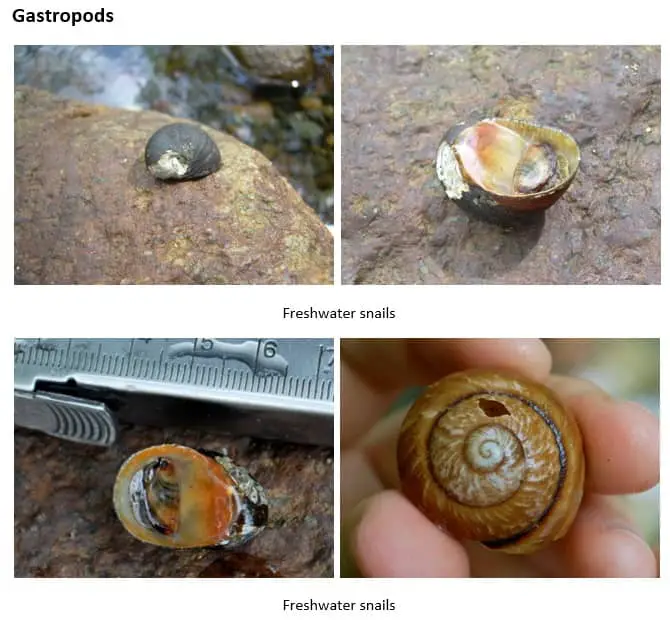
Freshwater gastropods or snails are ubiquitous in their freshwater habitat. Unpolluted running freshwater ecosystem like this are good sources of edible shells. These organisms fasten themselves on rocks with their sticky foot mucus that allows them to crawl up the rocks without falling off.
Crustaceans
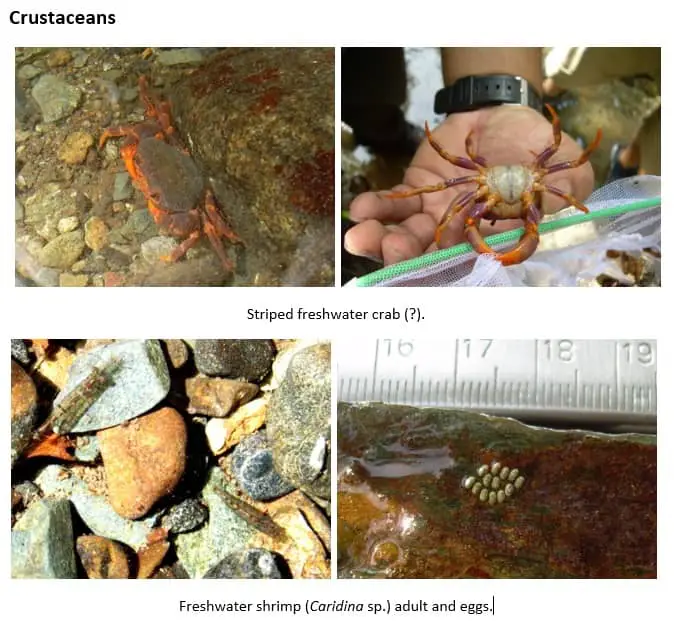
Looking closely along the edges of rocks, we found a striped crab, shrimps, and eggs of an unknown organism securely attached on rocks. The shrimps are almost indiscernible against a backdrop of pebbles and stones, given their transparent bodies. Disturbing the surrounding waters makes them visible.
Riparian Zone
Amphibians
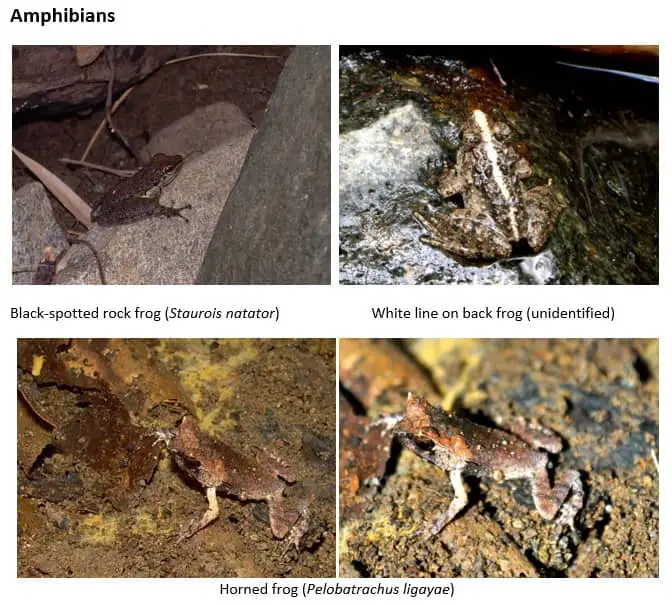
We found three amphibians in two places: on rocks and amongst leaf litter. These are the black-spotted rock frog, an unidentified frog with a characteristic longitudinal white midline, and a small Palawan horned frog underneath the mix of decaying leaves.
I find the horned frog interesting because of its characteristic “horn” that perhaps serves as camouflage that makes it inconspicuous. Without consciously inspecting the litter for living organisms, it would be difficult to spot the tiny frog because they lie still until poked or nudged.
Reptile
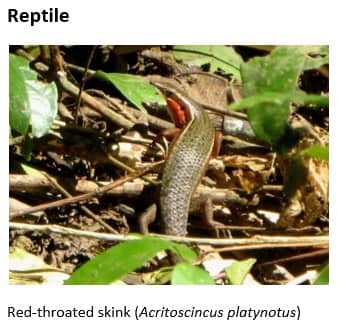
I saw a red-throated skink scuttle on leaf litter in a flash. It stayed motionless for a few seconds, allowing me to take a picture, then disappeared. This is the only reptile we have seen in the area.
Arachnids
Arachnids

Insects
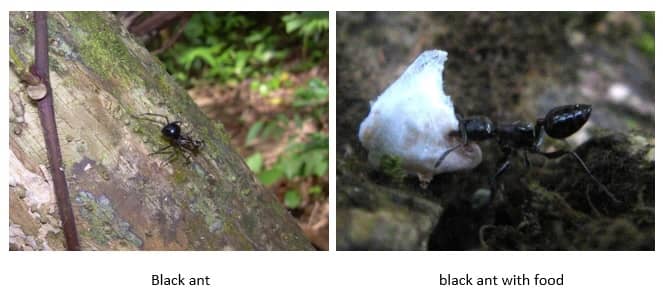
We found a solitary black ant on a fallen log. A few moments later, it tugged on a whitish material, perhaps its food.
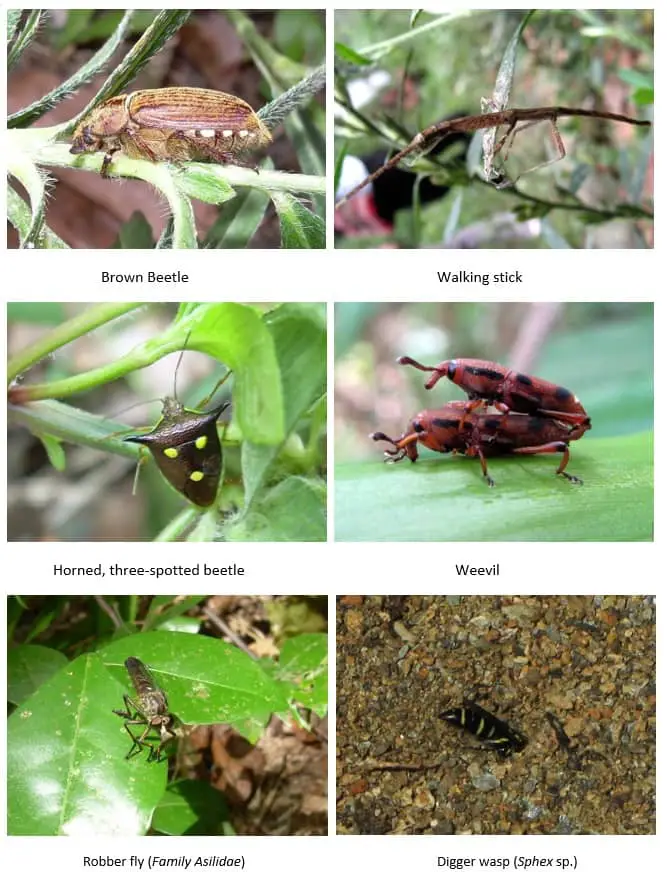
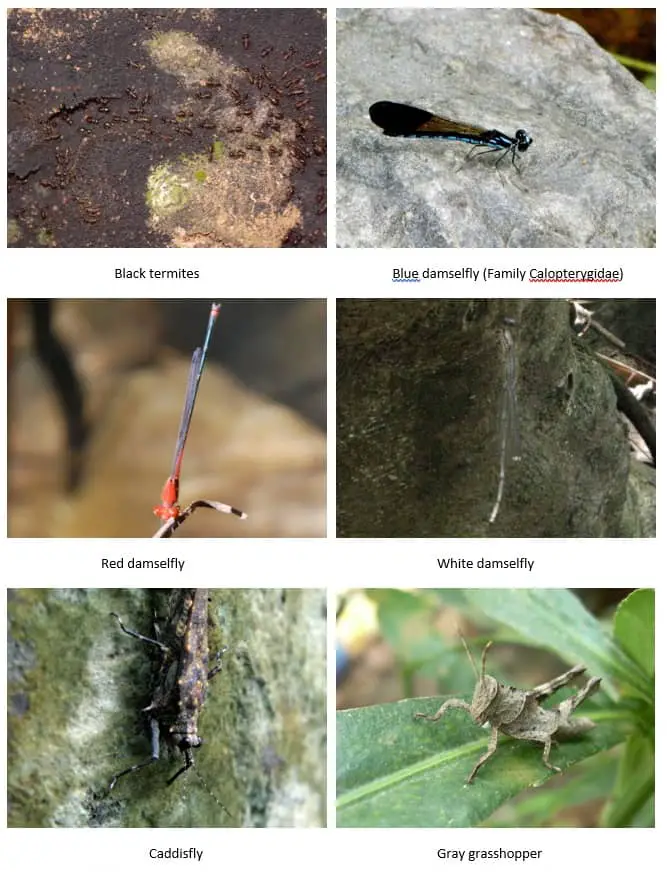
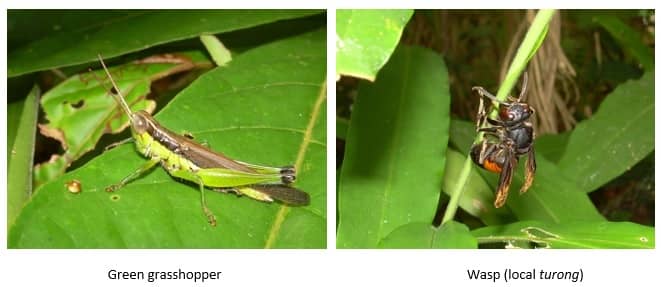
Insects are everywhere in the riparian zone of Balsahan River. These bugs consisted of beetles, walking stick, weevil, fly, and wasp.
The diversity of life in a freshwater environment like this underscores the significance of keeping rivers as healthy as possible. Without conservation policies that aim to preserve life in the aquatic and riparian zones, these organisms will just be part of human memory in the future.
Ecosystem Goods and Services of Balsahan River Ecosystem
The environmental goods and services identified in the area include:
- Liming (Agathis philippinensis) resin (bagtik) as a tree product,
- Aesthetic value of the natural environment surrounding Balsahan River,
- Recreational value of the Balsahan pool,
- Balsahan River as a source of freshwater and irrigation water for the rice paddies,
- Endangered species value,
- Research value of the pristine ecosystem of Iwahig Penal Colony, and
- Source of construction materials (timber and rocks).
The community recognized Almaciga sap (bagtik) collection as one of the forest activities in the area.
Acknowledgement
The inventory team acknowledges the management of Iwahig Penal Colony particularly to Penal Superintendent Mario Trasmonte for allowing them to conduct a quick inventory of the area, to Mr. Roy Solinap for providing assistance, and to our guide Mang Meno “Aborlan”.
References
Book
Widmann, Peter, 1998. A Guide to the Ecosystems of Palawan. Singapore: Times Edition. 120 pp.
Websites
- http://en.wikipedia.org/wiki/Gerridae
- http://www.earthlife.net/insects/ephemer.html
- http://www.flickr.com/photos/youcantryreachingme/3503944057/
- http://www.arkive.org/palawan-horned-frog/megophrys-ligayae/info.html
- http://www.ecologyasia.com/verts/amphibians/black-spotted_rock_frog.htm
- http://en.wikipedia.org/wiki/Asilidae
- http://bugguide.net/node/view/414/bgimage
- http://en.wikipedia.org/wiki/Digger_wasp
- http://www.epestsupply.com/termite_identification.htm
- http://www.hannafords.com/disease.php?id=26
- http://www.thecaddisfly.com/
- http://bugguide.net/node/view/71286
Participants of the Quick Survey
Patrick A. Regoniel, Ph D with MS in Environmental Science students namely, Alejandro Bernardo, Jr., Jennifer Rosaceña-Dancil, Ma. Catriona Devanadera, Maria Rosario Aynon Gonzales, Cherry Lyn Jalover, Marianne Faith Martinico-Perez, Agustin Miraflores, Marcus Swanepoel, Honesto Teves, and Nena G. Zara.
Pictures by P. A. Regoniel, A. Bernardo, Jr. and M. Swanepoel
Note: This report was modified from an original submitted to the Office of the Graduate School, Palawan State University, on February 10, 2010.
© 2024 February 17 P. A. Regoniel

